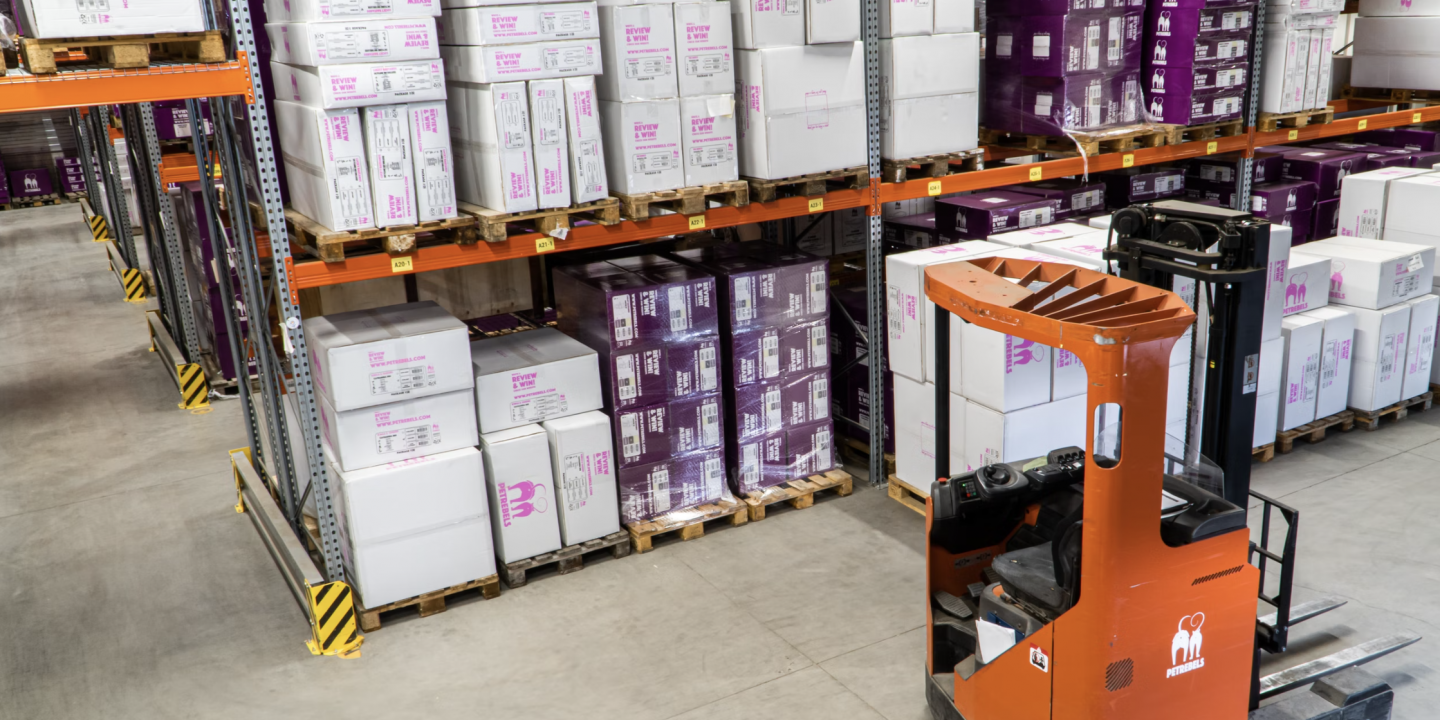Contents

Warehouse slotting is the process of organizing and arranging products within a warehouse to maximize storage space, improve picking efficiency, and reduce labor costs. Effective slotting is crucial for optimizing warehouse operations, as it directly impacts the speed and accuracy of order fulfillment, ultimately affecting customer satisfaction and business performance.
Benefits of Slotting
Whether you are slotting your warehouse or distribution center, there are clear benefits.
- Greater storage capacity: When you implement an inventory management system with warehouse slotting, you maximize your storage capacity. When your warehouse is full, it’s always a better option to first look at warehouse slotting rather than renting more space.
- Faster picking processes: Organization means that all workers know where specific products are located. Warehouse slotting focuses on logical placement, so items are grouped in a way that makes the most sense. As a result, pickers don’t waste time locating items. They are able to pick faster.
Warehouse slotting also reduces bottlenecks in the warehouse. If items are organized in a logical manner, you can reduce the time workers wait for aisles to clear. You can also reduce travel time if similar items are grouped together. Rather than traveling back and forth across the warehouse, workers can find similar items in one location. - Fewer picking errors: A poorly organized warehouse means more picking errors. The picking process is just more confusing when organization isn’t in place. Warehouse slotting can minimize picking errors, saving workers’ time and later headaches when errors occur.
- Reduced costs: Warehouse slotting can reduce overall carrying costs, allowing you to more easily calculate your inventory management needs. When a good organization system is in place, you can more easily determine when you actually need more storage space or workers.
Factors Affecting Slotting Decisions
When deciding how to slot products within a warehouse, several factors need to be taken into consideration:
Product dimensions and weight: Different products have varying sizes and weights, which can influence where they should be stored for optimal accessibility and space utilization.
Product turnover rate: High-demand items should be located closer to picking areas to reduce travel time and labor costs.
Storage requirements: Some products may have specific storage needs, such as temperature or humidity control, that can impact their placement within the warehouse.
Picking frequency: Items that are frequently picked together should be placed in close proximity to minimize travel time.
Types of Warehouse Slotting Techniques
There are several slotting techniques that warehouses can adopt to optimize their storage and picking processes:
- Fixed slotting: Each product has a dedicated location, making it easier to locate and manage inventory. However, this method may not utilize space efficiently.
- Dynamic slotting: Products are assigned to slots based on real-time demand, allowing for better space utilization and picking efficiency. This method requires a more advanced warehouse management system.
- Zone slotting: The warehouse is divided into zones, with each zone dedicated to a specific product category or group. This approach streamlines the picking process by minimizing travel time between zones.
- Hybrid slotting: A combination of fixed, dynamic, and zone slotting techniques, tailored to meet the unique needs of each warehouse.
Implementing Warehouse Slotting Strategies
To implement an effective warehouse slotting strategy, follow these steps:
- Assess the current warehouse layout: Understand the existing layout, storage systems, and product flow to identify areas for improvement.
- Analyze product data: Gather and analyze data on product dimensions, weight, turnover rate, and storage requirements.
- Select the right slotting technique: Choose the slotting technique that best suits your warehouse’s needs and objectives.
- Implement changes and monitor results: Make the necessary changes to your warehouse layout and monitor the results to ensure continuous improvement.
Best Practices for Warehouse Slotting
Implementing warehouse slotting can feel like a daunting task. Here are some best practices to get started:
- Gather SKU data.
To implement the right slotting system, you’ll need inventory data. Start by collecting the following information:
- Storage medium where the item will be picked from, such as a carton, shelf, or pallet rack
- Level where the item will be picked, such as a case, single piece, or full pallet
- Item’s weight and cube size
- Velocity of the item, plus any seasonal velocities
- Product affinity (groupings of items that are frequently ordered together)
- Any special storage requirements
You’ll make planning decisions based on the data you gather. Without that information, you won’t be able to optimize your warehouse slotting.
- Categorize SKUs by storage type, item level, and equipment required.
Single pieces will require different equipment than full pallets. Store necessary equipment like forklifts nearby the products that require them. This way a forklift won’t be blocking single pieces, creating bottlenecks in your warehouse. By organizing goods according to storage type, item level, and required equipment, you’ll improve overall efficiency.
- Group items that are frequently ordered together.
Review order history to identify items that are commonly ordered together. Put these items close together in the warehouse, so pickers can easily grab them together. This can significantly reduce picking time.
- Consider size and weight.
Big, heavy objects just take longer to move. Store these items lower to the ground and closer to where they are needed to save time and effort.
- Talk to your pickers.
Your pickers will be your best resource in terms of setting up warehouse slotting. They are continually moving around your warehouse or distribution center, and they’ll have feedback on what makes the most sense. With their feedback, you can eliminate bottlenecks and wasted trips, and improve overall efficiency.
- Implement a warehouse management system.
Warehouse slotting can be a complex process, and computer software can simplify it greatly. The software will suggest ways to optimize the overall space and improve routes. Pickers can use handheld devices to direct them to where products are stored, reducing time spent searching for items.
- Reassess the organization seasonally.
It’s a good idea to reorganize your warehouse seasonally due to trends. While you may need winter items like snow shovels easily accessible in the colder months, these can move to the back of the warehouse as summer approaches. Most businesses will have some seasonal fluctuations to consider, particularly around the holidays.
- Implement special storage requirements.
If any of your products require temperature-controlled conditions, group them together. Likewise, some goods may require heightened security; you may keep these items together in a locked cage or other area. Any potentially toxic items should be stored separately.
Real-life Examples of Successful Warehouse Slotting
Case study 1: Improved efficiency in a large warehouse
By implementing a dynamic slotting strategy, a large dry goods distribution center was able to reduce labor costs by 15% and improve order fulfillment speed by 20%.
Case study 2: Increased capacity in a small warehouse
A small warehouse specializing in outdoor clothing and sporting goods utilized zone slotting to increase storage capacity by 30% while maintaining the same floor space.
Case study 3: Faster order fulfillment in a high-demand warehouse
A high-demand warehouse in a large urban market adopted hybrid slotting techniques, resulting in a 25% reduction in order picking time and improved customer satisfaction.
Warehouse Slotting: A Key to Efficient Operations
In conclusion, effective warehouse slotting is essential for optimizing storage space, reducing labor costs, and increasing order fulfillment efficiency. By understanding the factors that influence slotting decisions, adopting the appropriate slotting techniques, and following best practices, warehouse operators can significantly improve their operations. Regularly reviewing and adapting slotting strategies to meet changing product demands and warehouse conditions will ensure ongoing success and efficiency in warehouse operations.
References
Tips For Reducing Warehouse Supply Chain Challenges. (February 2022). Forbes.
Warehouse Space Is the Latest Thing Being Hoarded. (February 2022). The New York Times.




